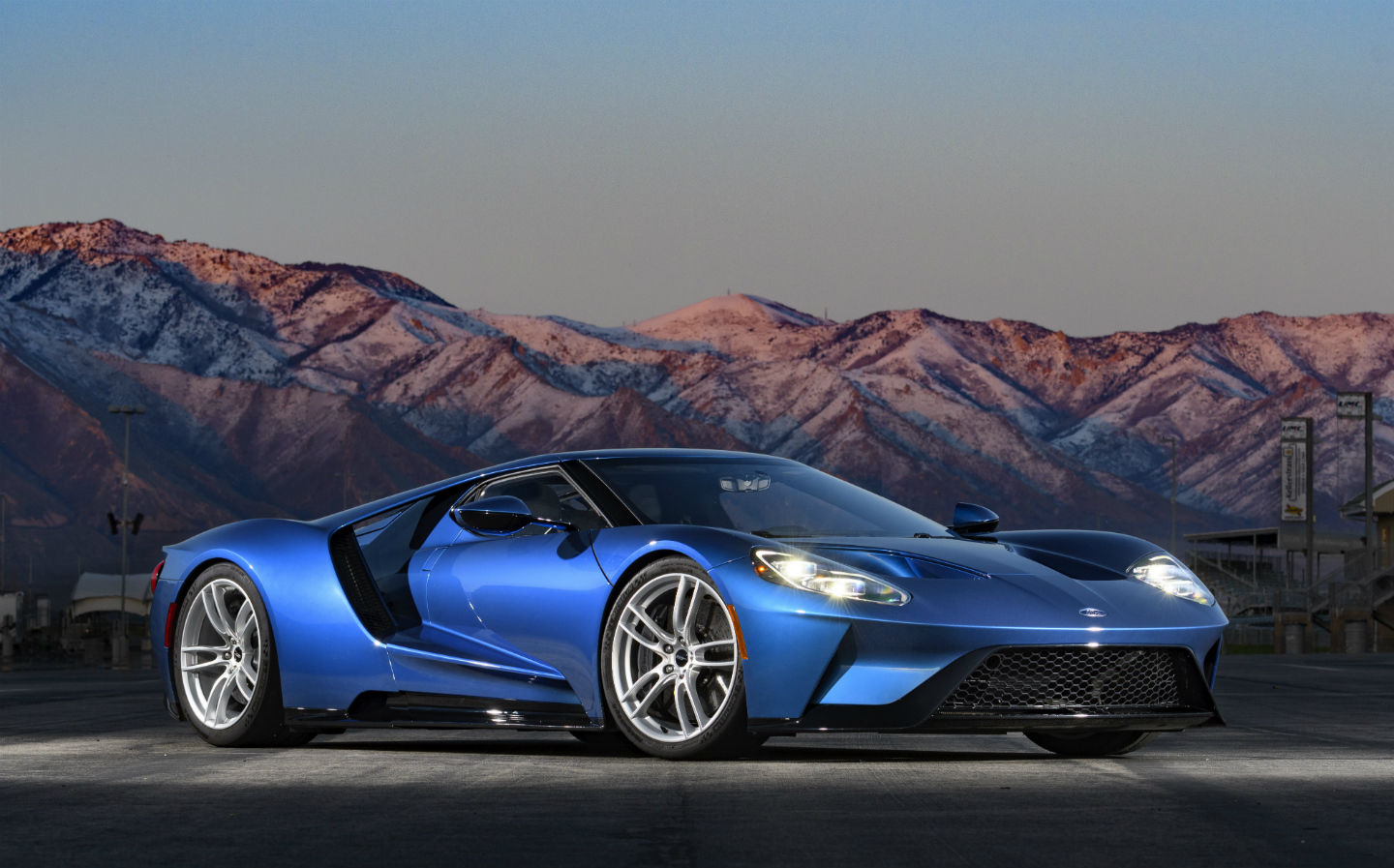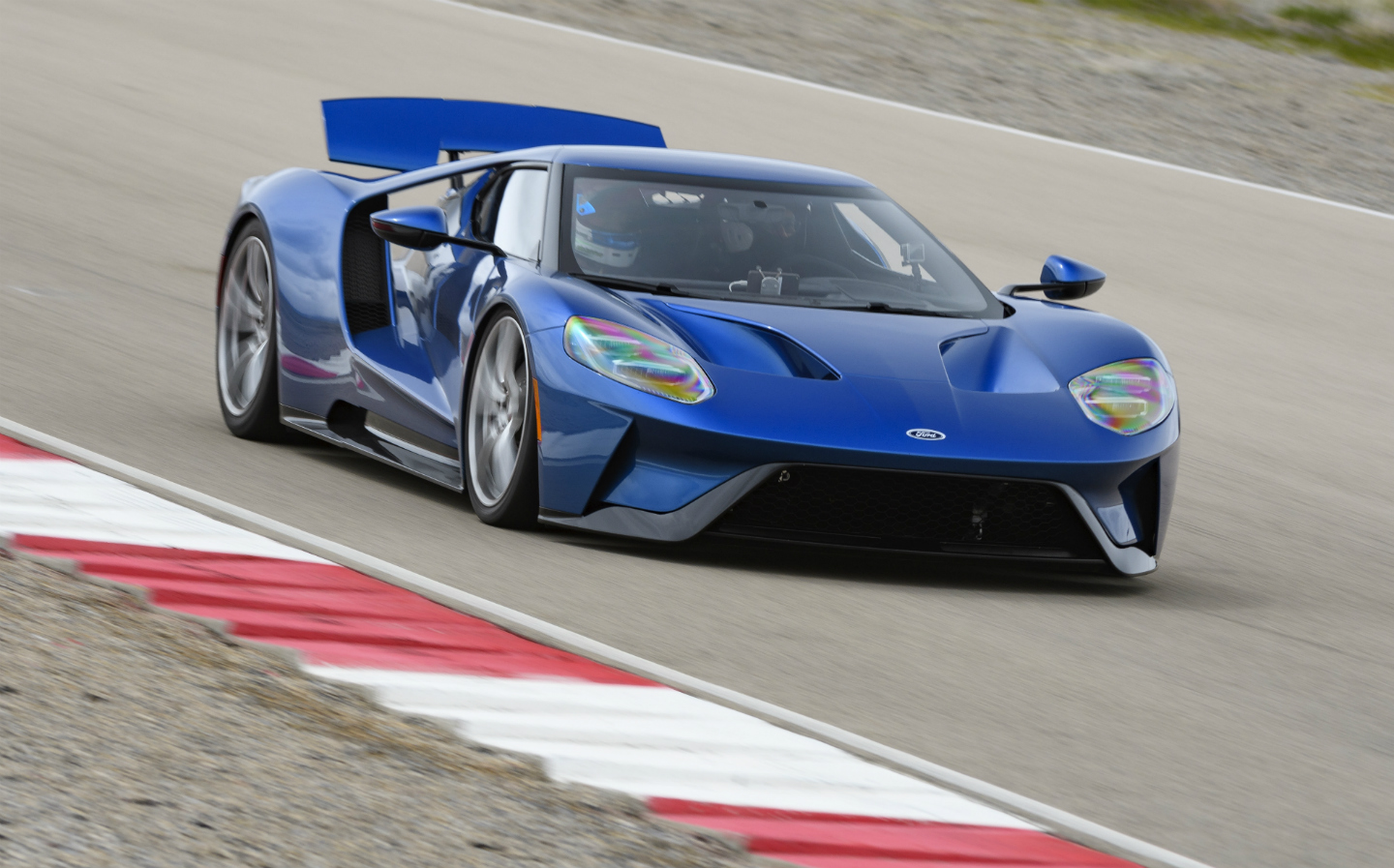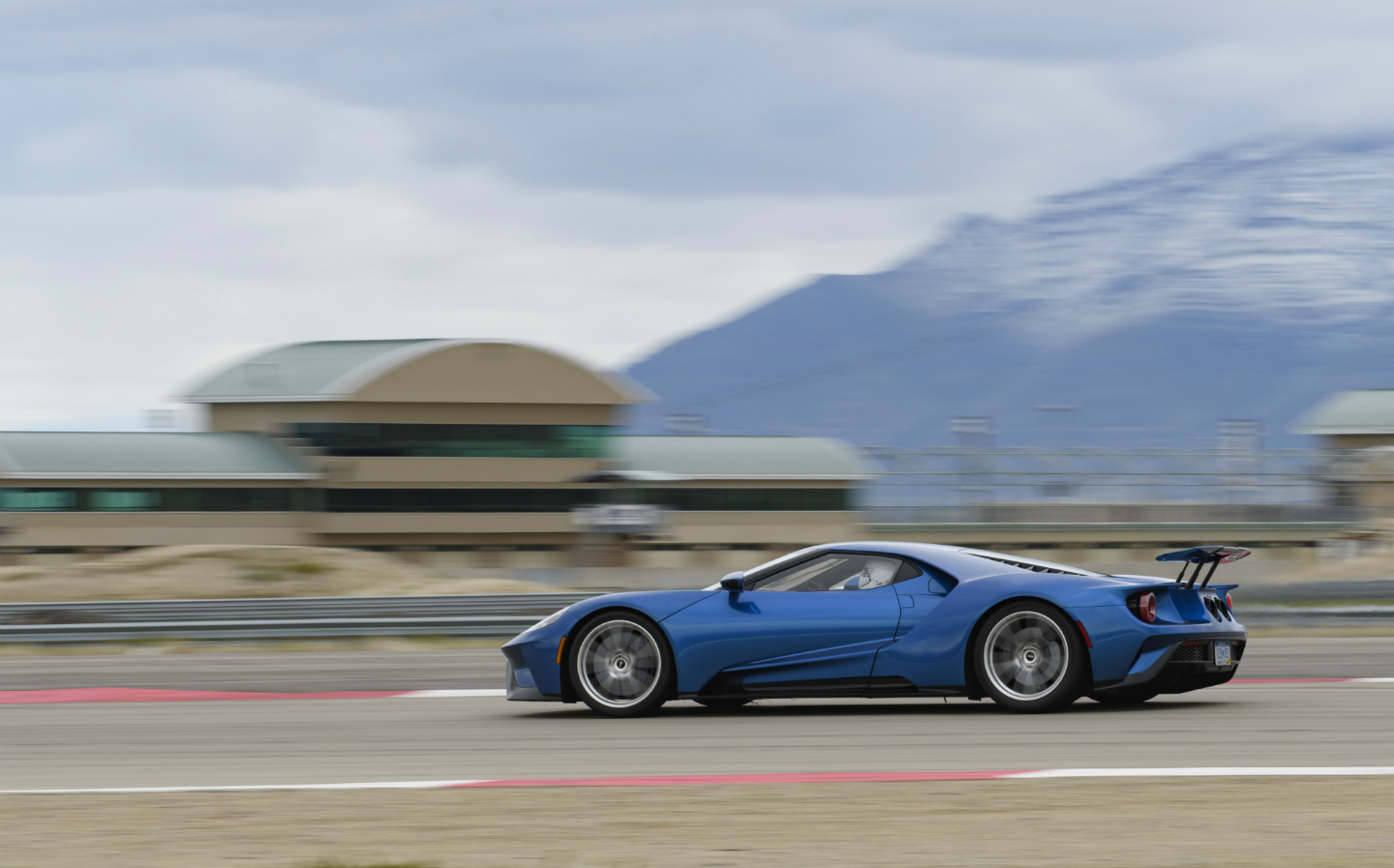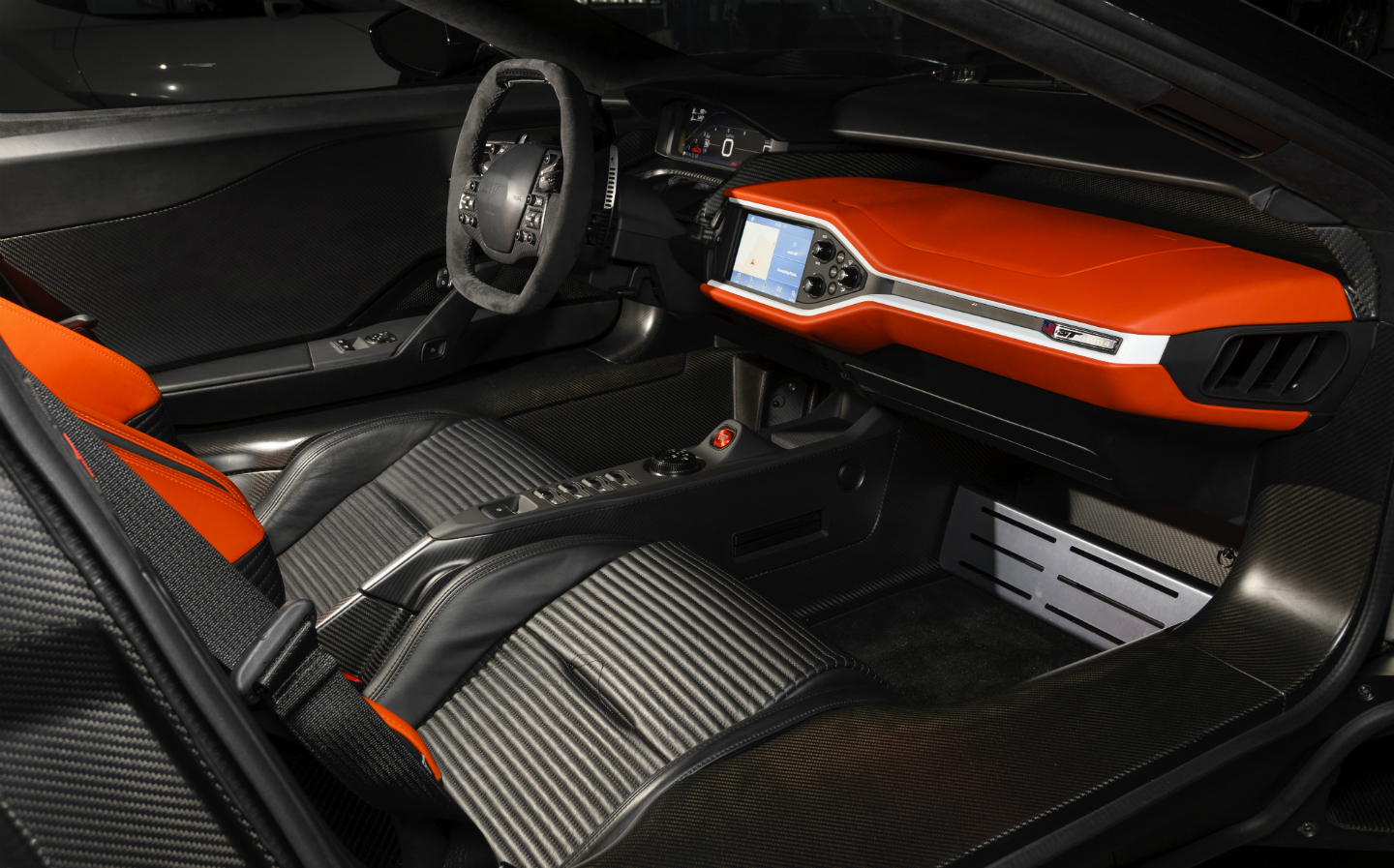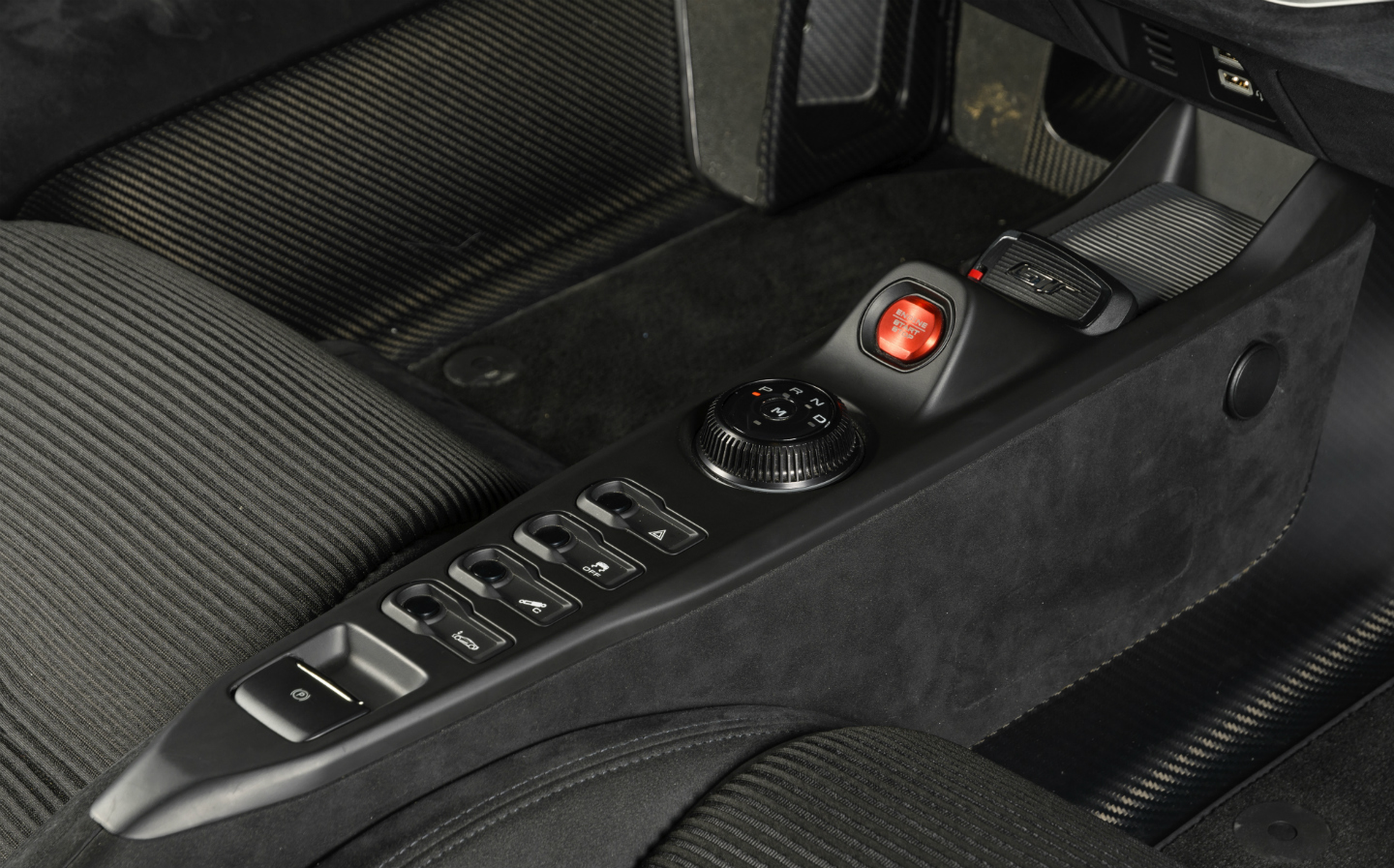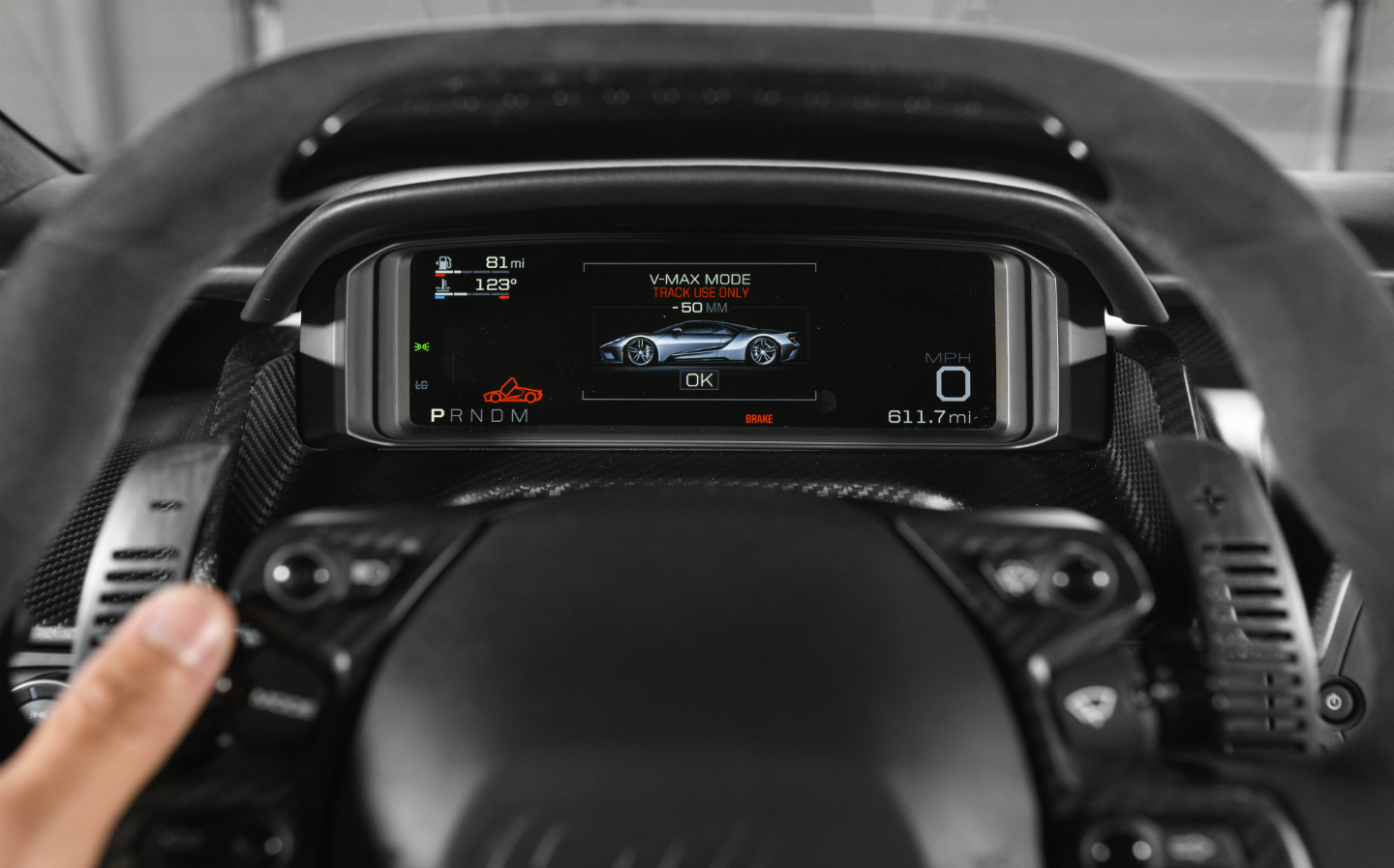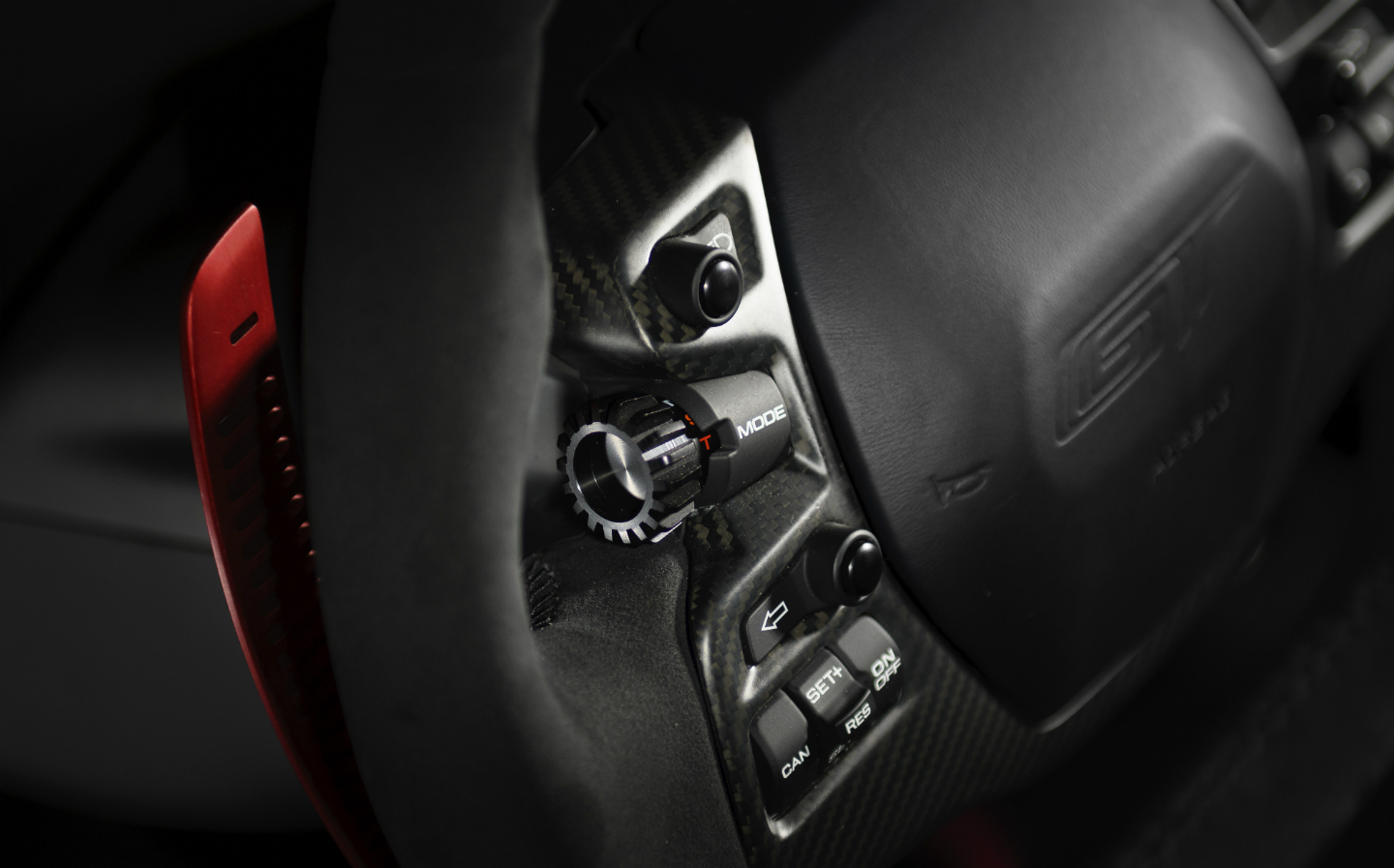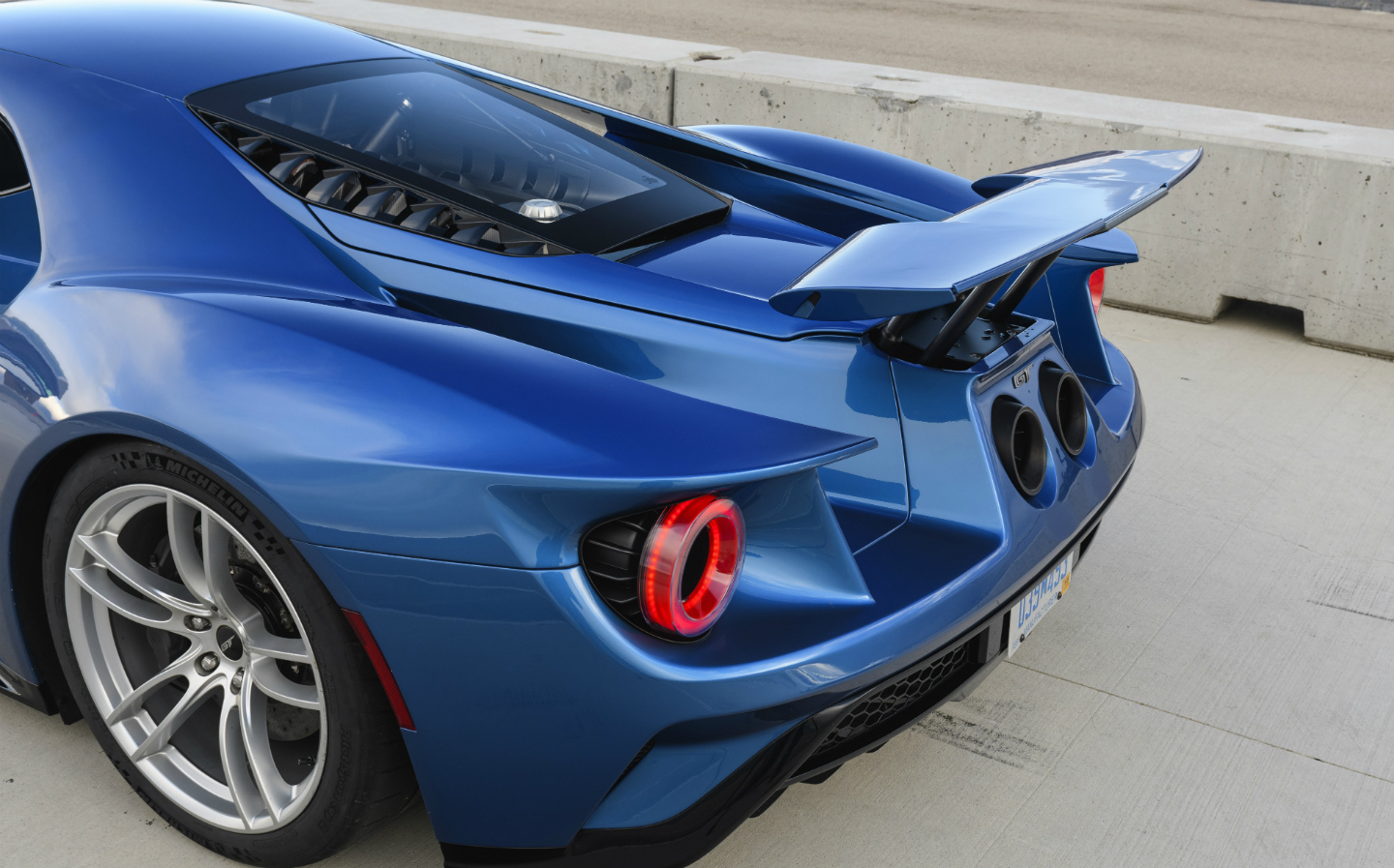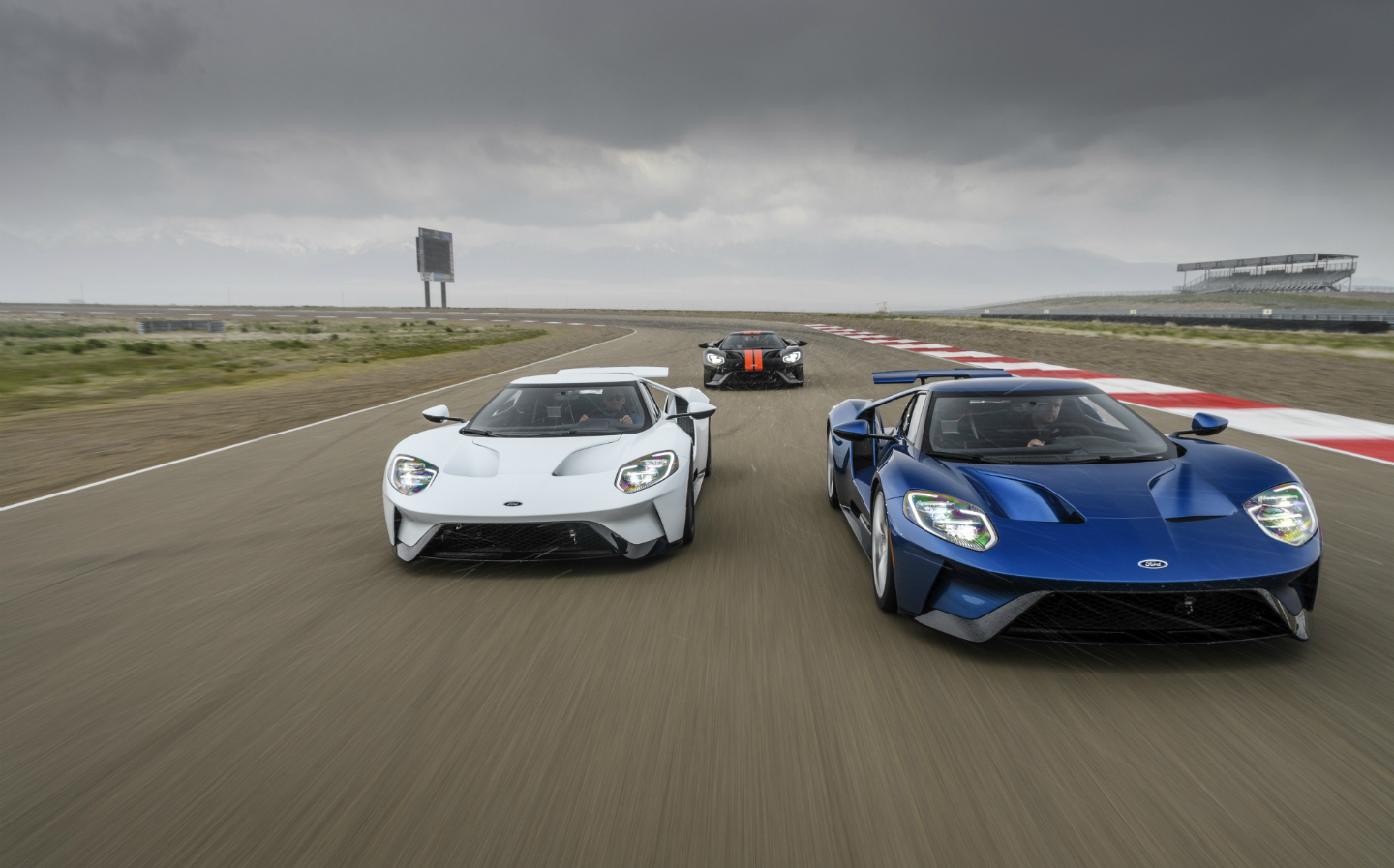First Drive review: 2017 Ford GT
The fast and furious Ford
THE new Ford GT has a lot to live up to. The supercar’s ancestor, the GT40, humbled Ferrari at Le Mans in 1966, and won again in 1967, 1968 and 1969. Then, in 2004, a road version was launched, and it was good. Very good. Jeremy Clarkson liked it so much he bought one — although he did end up asking for his money back because of problems with the alarm.
But here’s the new model, and it’s been setting Le Mans alight all over again: in 2016 it won its class at the 24 Hours. And it’s been winning races this year, too, in America and Europe.
Now it has been tamed for the road. I say “tamed”, but the roadgoing Ford GT isn’t really a supercar to rival the Ferrari 488 and McLaren 720S: it’s still more racing car than motorway monster, and quite unlike anything else on sale today. It’s noisy, brutal, visceral, impractical, beautiful and thoroughly intoxicating. You wouldn’t choose it for a trip to the Riviera. It’s a thoroughbred machine to heighten the senses. A piece of escapism for the fortunate few.
Browse NEW or USED cars for sale
Throw up a scissor door and you slide down into a cosy carbon fibre cocoon. There’s no carpet or creature comforts — the only luxury is a cupholder, a sop to Ford’s home market. The seats are fixed, so to adjust the driving position you pull a cord and slide the pedals backwards or forwards. Grab a lever and pull the steering wheel closer. The driving position is good, but the passenger seat is so close that there’ll be intimate contact, whether you like it or not.
The digital dashboard seems designed for simplicity, but the steering wheel is home to a baffling array of controls. Press the big red Start button on what passes for the centre console and there’s a loud noise from behind your shoulder. It sounds like a racing car. Good.
The body is almost shrink-wrapped around the tiny cockpit to reduce drag, a prerequisite of success at Le Mans. In last year’s race the GT took the Mulsanne Straight at 190mph, day and night. Freed of the regulations hobbling the racer, the road car is even faster, capable of hitting 216mph in V-Max mode.
Freed of the regulations hobbling the racer, the road car can hit 216mph
That’s one of five driving modes — Wet, Normal, Sport and Track are the others. We began in the inappropriately named Normal. Pull the right-hand of the two paddles behind the steering wheel and the car growls its way up the road. There’s noise, not just from the engine, but from the suspension and road. You sit low and peer out through a visor of a windscreen – it’s not for the claustrophobic. The car’s chief engineer, Jamal Hameedi, says he wants everyone who sits in the car to feel as if they’re on the start line at Le Mans, and he’s succeeded.
Ford launched the GT in Salt Lake City, at an altitude of 5,000ft. Apparently, the lower air pressure robs the engine of 70 horsepower, but that still leaves 577 to play with, plus 550 lb ft of torque.
The engine has been a source of contention among petrolheads. Smaller and viewed as less exotic than the V8s and V12s in some rival machinery, the 3.5-litre V6 can also be found in Ford’s school-run SUVs. But extensive engineering changes plus a couple of turbochargers give it the kick of a carthorse.
For reasons it hasn’t fully explained, Ford has decided not to release performance figures for the GT, except the top speed. Hameedi simply says 0-60mph takes “around three seconds.” Suffice it to say that even at altitude drivers are unlikely to complain about a lack of power, especially in third and fourth gear. An anti-lag system helps ensure the turbochargers respond instantly in Sport and Track mode.
Thankfully the carbon ceramic brakes are stupendous. Helped by the rear wing, which doubles as an air brake, they haul the car back so effectively that for all its macho posturing it isn’t too intimidating to drive. Leave it in Wet or Normal mode and it will potter along at 70mph in seventh gear without drama. The ride may not be considered comfortable, but it’s not intolerable.
Browse NEW or USED cars for sale
No doubt many GTs will be driven this way. With only a thousand being built over the next four years, they will be the poser’s choice from London to Los Angeles. Except the ones stored in a humidity-controlled underground car park accumulating value and dust.
If you decide you want a GT, you’re already too late: though 250 of the 1,000 cars have yet to be allocated, Ford says they’re oversubscribed by a factor of eight. So even if you are on the list, you may have to settle for a Ferrari instead.
This review is abridged. Look out for the full version in The Sunday Times Magazine in a couple of weeks.


